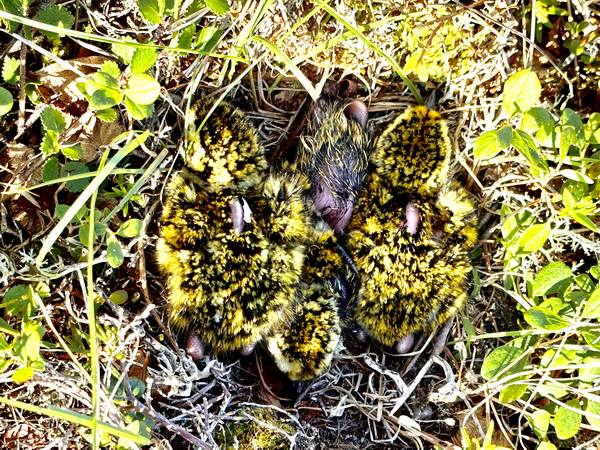
July 6, 2023
Twenty Hawaiʻi Audubon Society members left Nome last week uttering a phrase few Alaska prospectors get to say: “We struck gold.”
Gold chicks, that is. During a trip that organizers named “Kōlea Quest 23,” four Pacific Golden Plover chicks thrilled us to our toes by hatching about two hours before we had to board the plane for home.
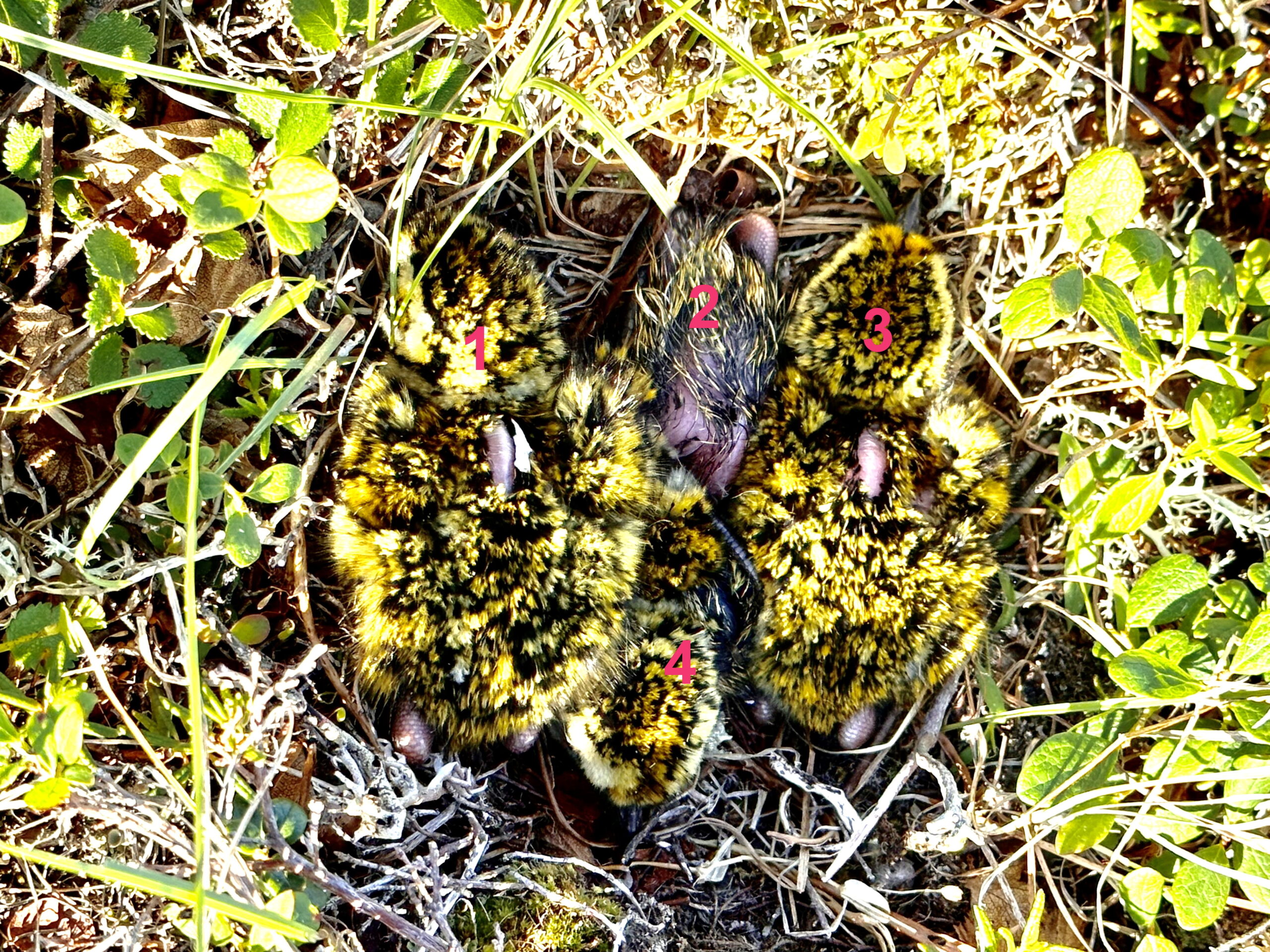
Chicks hatch in the order the female laid the eggs. The top center chick, still wet, was the last to hatch. The parents immediately pick up the empty eggshells and drop them far from the nest, since the white shell interiors are a visible clue to predators. The flesh-colored bumps are the chicks’ long, adult-size legs folded beneath them. ©Susan Scott
We knew the odds of finding kōlea chicks were low given that shorebird nests are incredibly hard to find on the vast Alaska tundra. Also, the hatching had to be within our five-day visit, and even if they hatched, we had to get to the chicks before they left the nest and started running round eating insects and berries. Kōlea parents warm and protect their newly hatched chicks, but do not feed them.
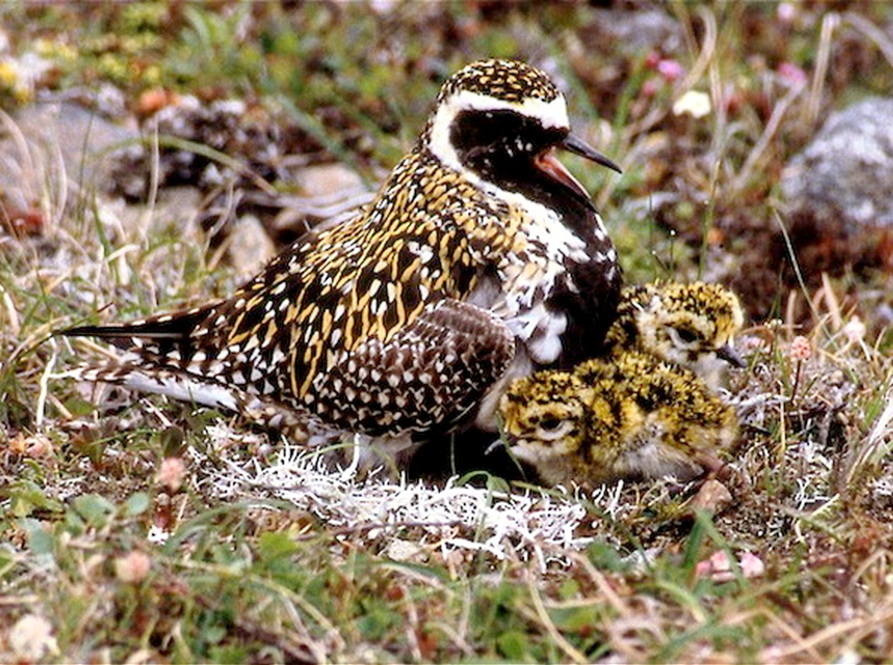
This photo from one of Wally’s past trips shows a male parent protecting his newly hatched offspring. © O.W. Johnson
Our chick-viewing chances fell even further when Nome resident and guide, Carol Gales, of Roam Nome, sent pictures of area roads in early June. Snowfall this year, she emailed, was heavy and the thaw was late.
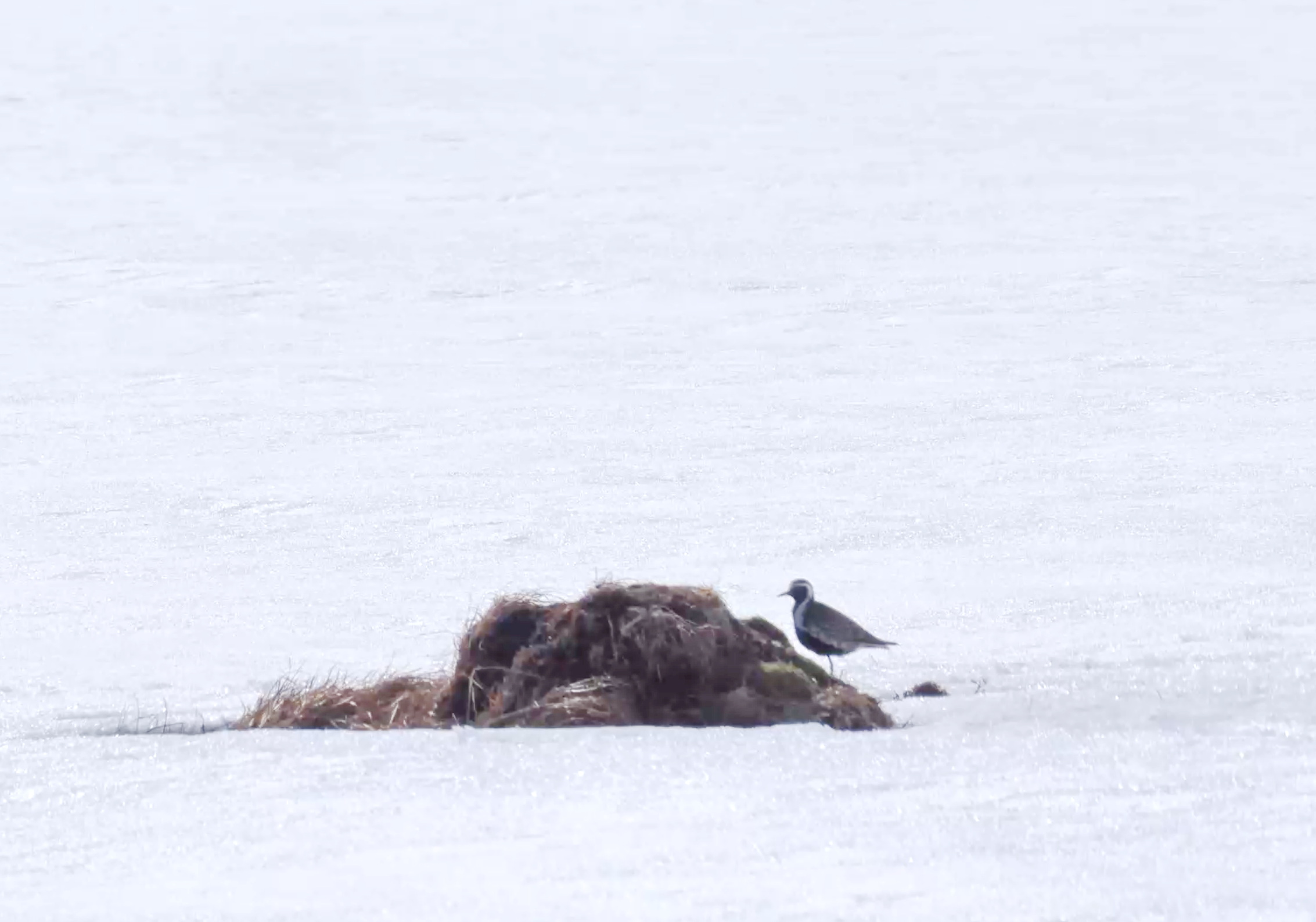
Late snowfall leaves little for newly arrived kōlea to eat. © Jim Dory
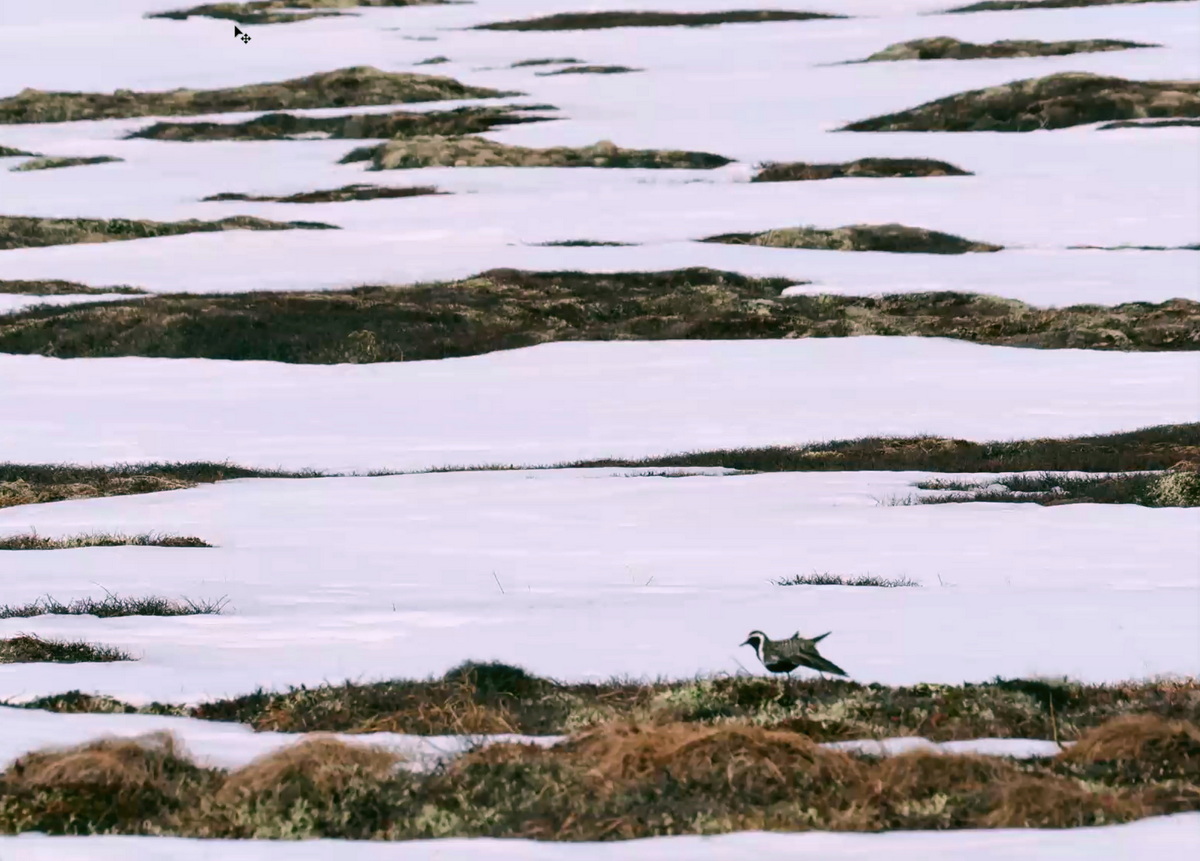
After their 3,000-mile nonstop flight, kōlea need nourishment fast. When mosquitoes and other insects hatch late due to cold weather, kōlea eat freeze-dried berries from the previous fall. © Jim Dory.
Optimism ruled, however, because we had plover expert, Wally Johnson, with us as well as his as his long-time assistants, Nancy and Paul Brusseau of Anchorage. We weren’t off the plane an hour when those researchers were off looking for plovers.
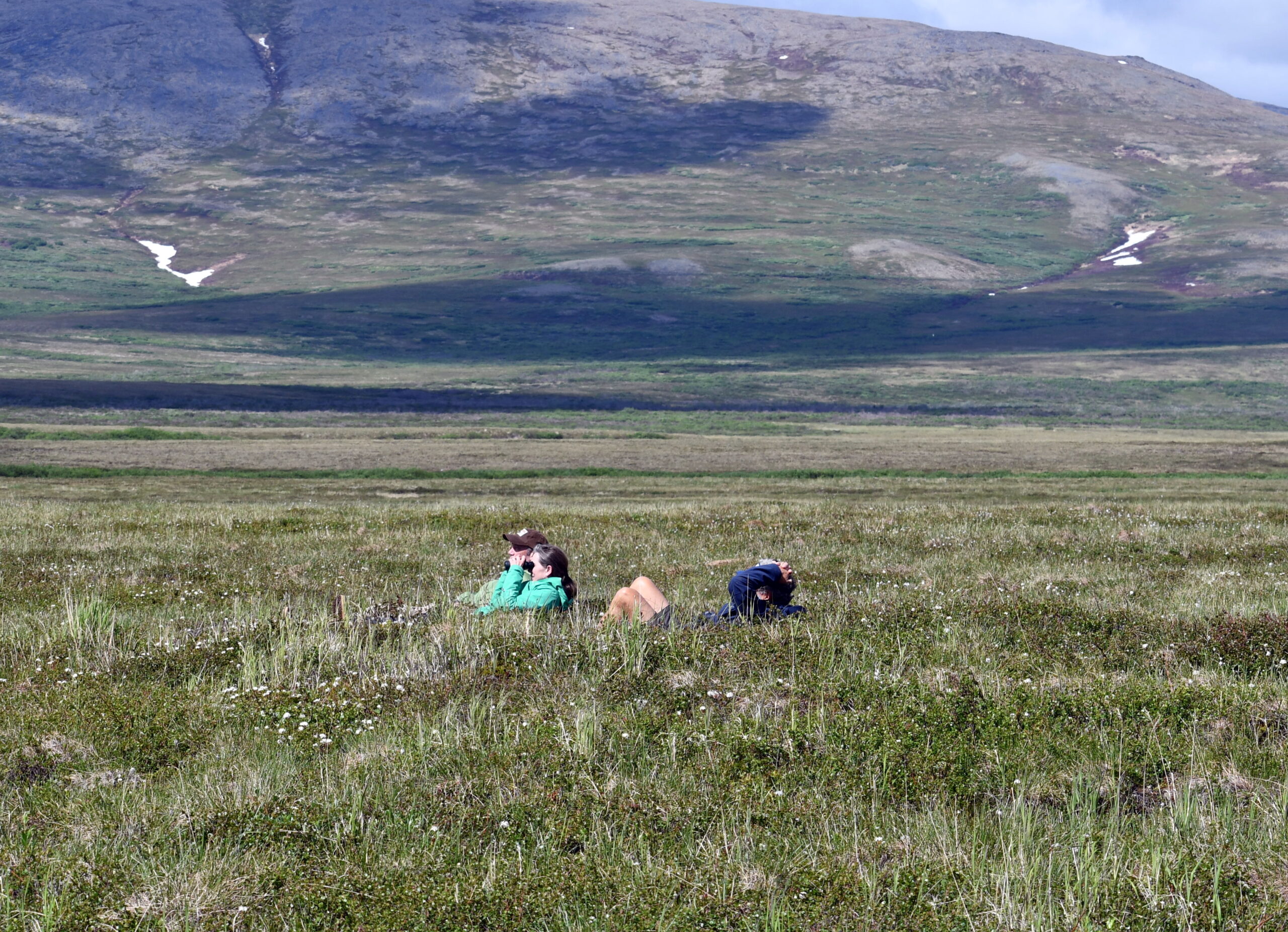
To find a nest in the vast tundra, Alaska researchers, Nancy and Paul Brusseau, watch where a flying kōlea landed. Craig Thomas (my husband) in shorts, works hard here supervising. ©Susan Scott
Over the next couple of days the team found three kōlea couples, but only two nests. Hawaiʻi’s people-friendly kōlea become extraordinarily wary in their tundra nesting grounds because they’re loaded with predators. Foxes, jaegers, ravens, and raptors are constantly on the prowl for tasty eggs and scurrying chicks.
One of the two discovered plover nests was near a road and easy to check, but as the days wore on, and the eggs hadn’t hatched, we resigned ourselves to not seeing chicks. Even so, the plover eggs were a fine sight to behold, and any visit to remote Nome, located on the Seward Peninsula, is a grand success with its spectacular plants, animals, and jaw-dropping scenery.
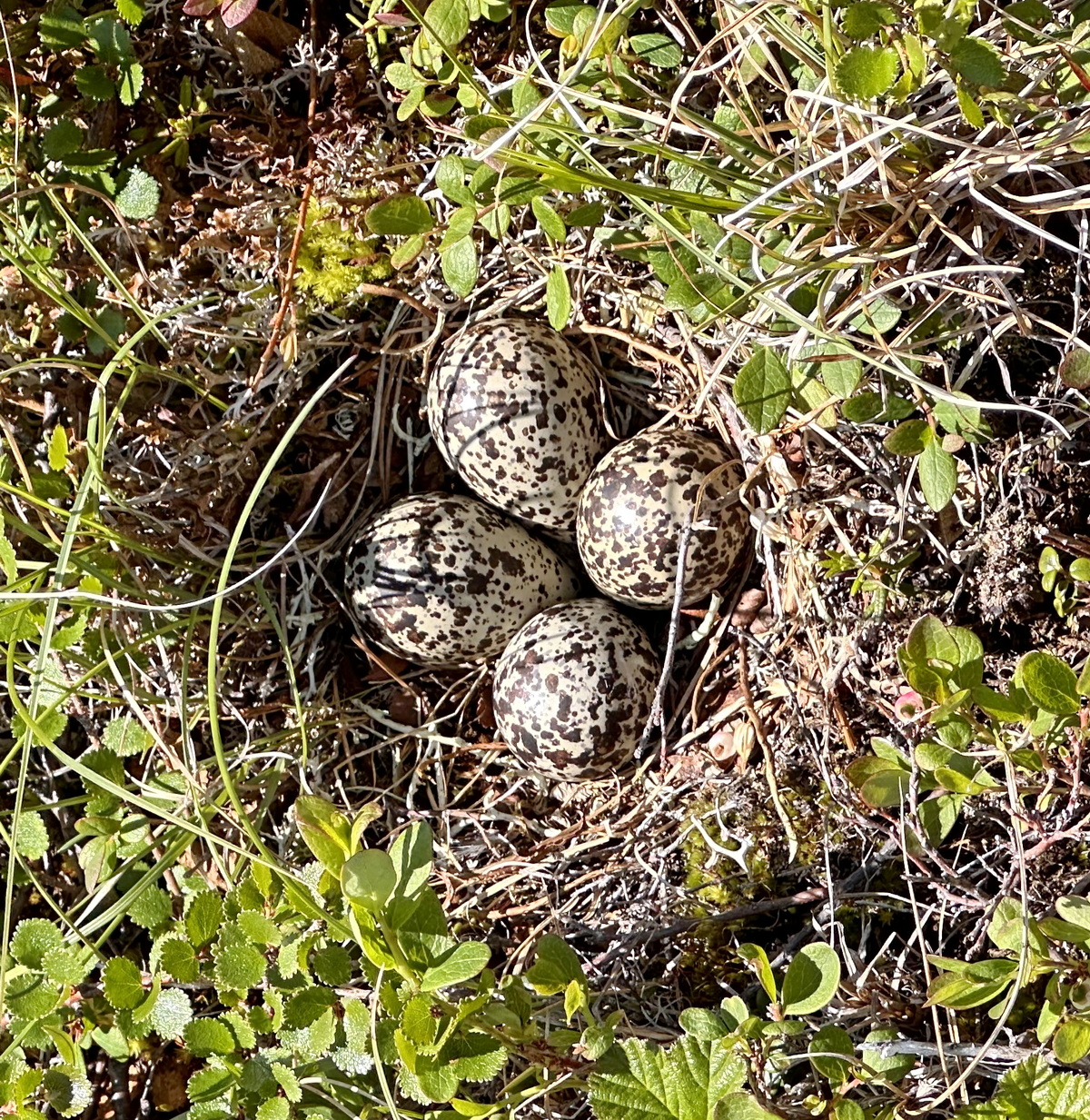
And then nature gave us a living, breathing gift: The search team texted a picture of four hatchlings, and we had just enough time for all of us to get a quick look.
Nome is famous for gold seekers, but for us plover lovers, those tiny golden bodies were our own special bonanza.
For more about Kōlea Quest 23, with more photos, see my website post here.

Dr. Wendy Kuntz of Kapiolani Community College is recording Paul’s brief explanation of finding the well-camouflaged chicks. Even up close, the nest is hard to find. ©Susan Scott
Kōlea Count Carries On
The 2022-2023 season of Kōlea Count ended June 30th. Thank you all for helping us learn more about Hawaiʻi’s plovers and for sending outstanding stories and photos. I treasure them all.
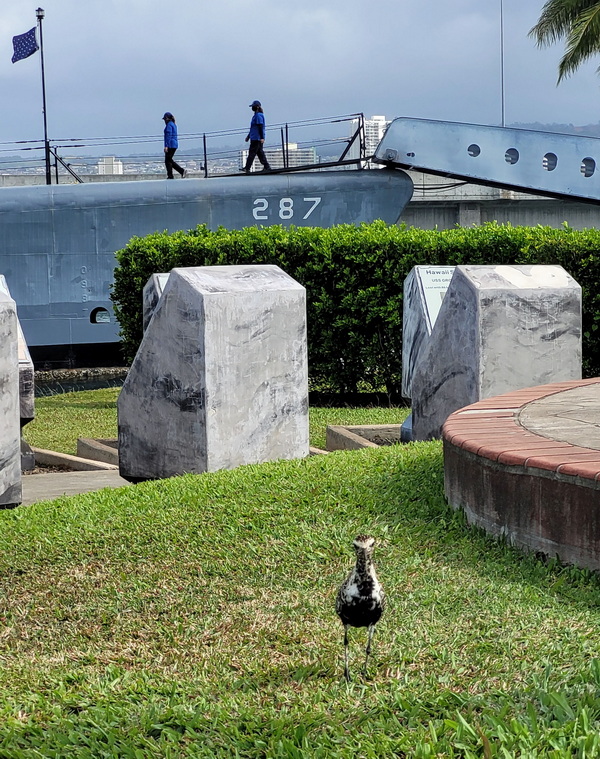
A kōlea visiting the Pearl Harbor Memorial, April 8, 2023 ©David Hyrenbach
After we analyze your reports, I’ll post a summary here in NEWS.
The 2023-2024 season started July 1st. Thank you for reporting dates and locations of the kōlea returns. Because this was a cold, snowy season in Alaska, we’re curious if more birds return earlier this year due to failed nests.
Sign up once again for Big Counts, starting December 1st at bit.ly/2BFwVXG
I’ll be working this summer to update count locations. See GUIDLINES tab for instructions, or contact me in CONTACT tab.
With aloha,
Susan Scott, plover lover (and as a result, Hawaii Audubon Society president)